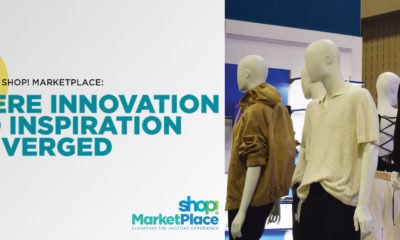As Godzilla reappears on our movie screens, I’m reminded of a time when “made in Japan” was code for “junky.” It was the 50s, and the industrious little island nation was trying to rebuild its once-thriving commerce. Instead of building battleships, though, it was making cheap toys, kitschy monster movies and little portable radios that got a signal whenever the sun, planets and tide were in perfect harmony.
It wasn’t long, though, before “made in Japan” came to mean Toyota and Nissan, Honda and Canon, Panasonic and Olympus and Ricoh. And in the 80s, we fell all over ourselves admiring Japanese kaizen, a cultural approach to best practices, in the board room and on the plant floor.
Then came the 90s, Japan’s “lost decade,” a crashing of the stock market and real estate market and bursting of the economic bubble, and we found other foreign economies to admire. Korea. Germany. Dubai. And the acronymic BRIC (Brazil, Russia, India, China).
Of course, Japan never entirely went away. It reevaluated and regrouped. And these days, its resurgence seems personified by the runaway success of its number one retail brand, Uniqlo. When we first became aware of it, maybe 10 years ago, Uniqlo was explained to us as “the Gap of Japan.” Gap should only wish!
Even the brand name is brilliant – quirky, mysterious, edgy. (Actually, as Women’s Wear Daily recently pointed out, it’s a name based on a misspelling. The original name was the Unique Clothing Warehouse – or maybe UniClo – but a Japanese employee got the letter wrong. How much did you pay that marketing consultancy for your brand identification program?)
Uniqlo is not to be lumped together with H&M and Zara, those other two über-successful international brands. Unlike fast, disposable fashion, Uniqlo offers durable, well-made goods. And the selection is deeper. Uniqlo shoppers don’t compete for a few pair of hipster skinny jeans, they peruse many sizes, colors and styles. A picture I saw of a wall of colorful Uniqlo shirts is reminiscent of Macy’s wall of Polo shirts in the 80s.
Advertisement
And then there are the stores. When founder Tadashi Yanai plotted his world takeover, it was about big, impressive stores in the world’s fashion capitals, like New York and London. And not mall stores, either, but flagships in high-end retail locations – memorable, exciting brand-builders.
Uniqlo’s formula also has a lot to do with extraordinary employee training that requires all store personnel to touch each customer several times during a shopping trip, with seemingly meaningless outreaches like, “How are you today?” and “Did you find everything you were looking for?” and “Thank you for waiting” and a parting “Goodbye. We hope to see you again soon.”
Yes, meaningless, unless you’re a shopper used to being ignored in other stores.
Seems like kaizen is alive and well – again. Based on the reviews, I can't say the same for Godzilla.
As a journalist, writer, editor and commentator, Steve Kaufman has been watching the store design industry for 20 years. He has seen the business cycle through retailtainment, minimalism, category killers, big boxes, pop-ups, custom stores, global roll-outs, international sourcing, interactive kiosks, the emergence of China, the various definitions of “branding” and Amazon.com. He has reported on the rise of brand concept shops, the demise of brand concept shops and the resurgence of brand concept shops. He has been an eyewitness to the reality that nothing stays the same, except the retailer-shopper relationship.


 Headlines1 week ago
Headlines1 week ago
 John Ryan2 weeks ago
John Ryan2 weeks ago
 Headlines1 week ago
Headlines1 week ago
 Retail Buzz4 days ago
Retail Buzz4 days ago
 Headlines1 week ago
Headlines1 week ago
 Headlines2 weeks ago
Headlines2 weeks ago
 Headlines2 weeks ago
Headlines2 weeks ago
 Headlines2 weeks ago
Headlines2 weeks ago















